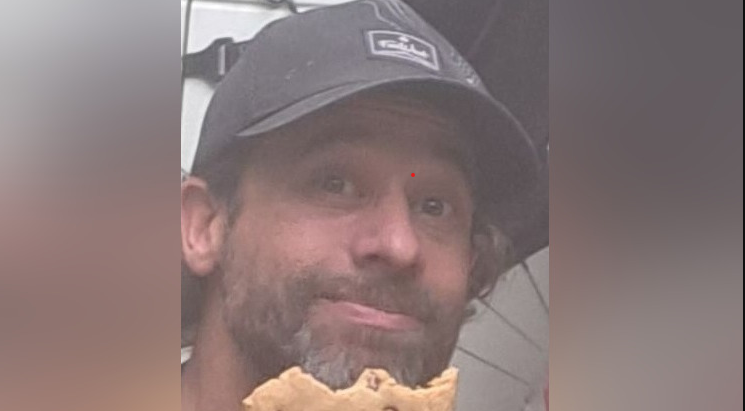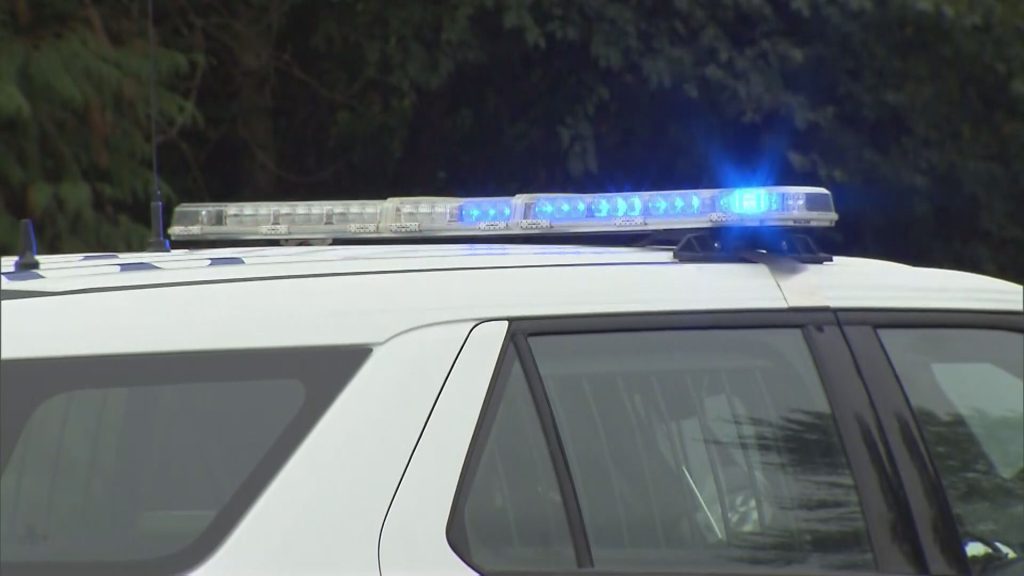Missing Michael: Could Michael Dunahee be alive?
Posted March 15, 2022 6:37 am.
Last Updated March 15, 2022 6:51 am.
Michael Dunahee’s parents still hold out hope their son is alive and will one day return to his family. It’s been 30 years since Michael vanished from near a Victoria elementary school playground in 1991.
“I picture Michael knocking on my front door saying he’s home with a family with kids of his own or without a family. I don’t know. Until they show us something otherwise then I think he’s going to be back, keep the hope going,” Bruce Dunahee says, imagining a reunion with his son.
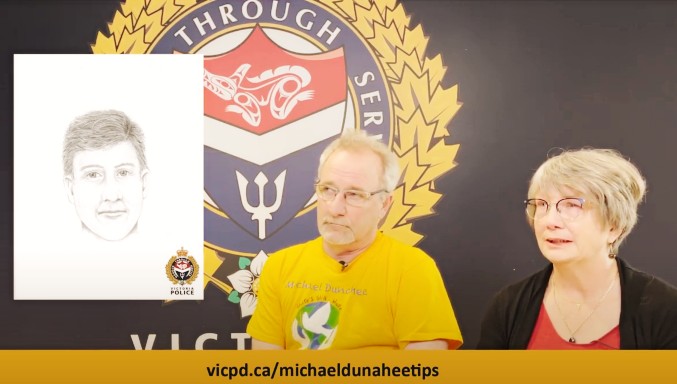
Michael Dunahee’s parents, Bruce and Crystal, sit in front of a wall with a police emblem on it to the right of a police sketch showing what Michael could look like 30 years after he disappeared. (Courtesy MichaelDunahee.ca)
Michael’s baby sister Caitlin was raised to believe she is not an only child. She tells people, “I have a brother, my parents have two kids, my brother is just not here.”
Caitlin is now a mother herself and would like to think Michael was taken by someone who wanted to parent a child.
“I hope he was raised by a family that couldn’t have children and they just smothered him with love,” she says.
Yet even holding onto that best case scenario leaves Caitlin with unsettling thoughts.
“Assuming he had that great life and we find him, we’re just ripping apart his childhood now. And what if they were amazing to him, but now of course, they’re going to be punished for what they did. And I think they deserve to be. But again, I just feel like there’s no winning.”
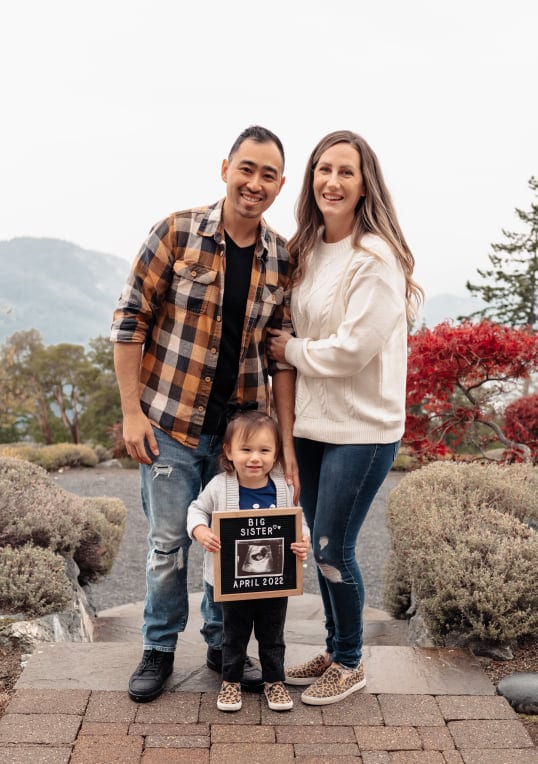
Michael Dunahee’s sister, Caitlin, pictured with her family. (Submitted)
If Michael is alive, DNA could be the last best hope for finding him. In recent years, new technology has made it possible for Michael’s DNA to be created.
“They managed to do it with technology, because his toys hadn’t been touched by anybody else. So using toys that he played with most with and his hat that he wore, they actually cut little chunks out of it. And they were able to build from our DNA, fill in the missing strings. So now they actually do feel that they have the DNA for Michael,” Crystal explains.
Crystal has also been using her own DNA to ‘fish’ for Michael’s in the consumer DNA banks, a process the Victoria Police Department helped set up for the Dunahees a few years back.
Cece Moore believes all families of the missing should take this step. She is the chief genetic genealogist at Parabon NanoLabs and the founder of the DNA Detectives.
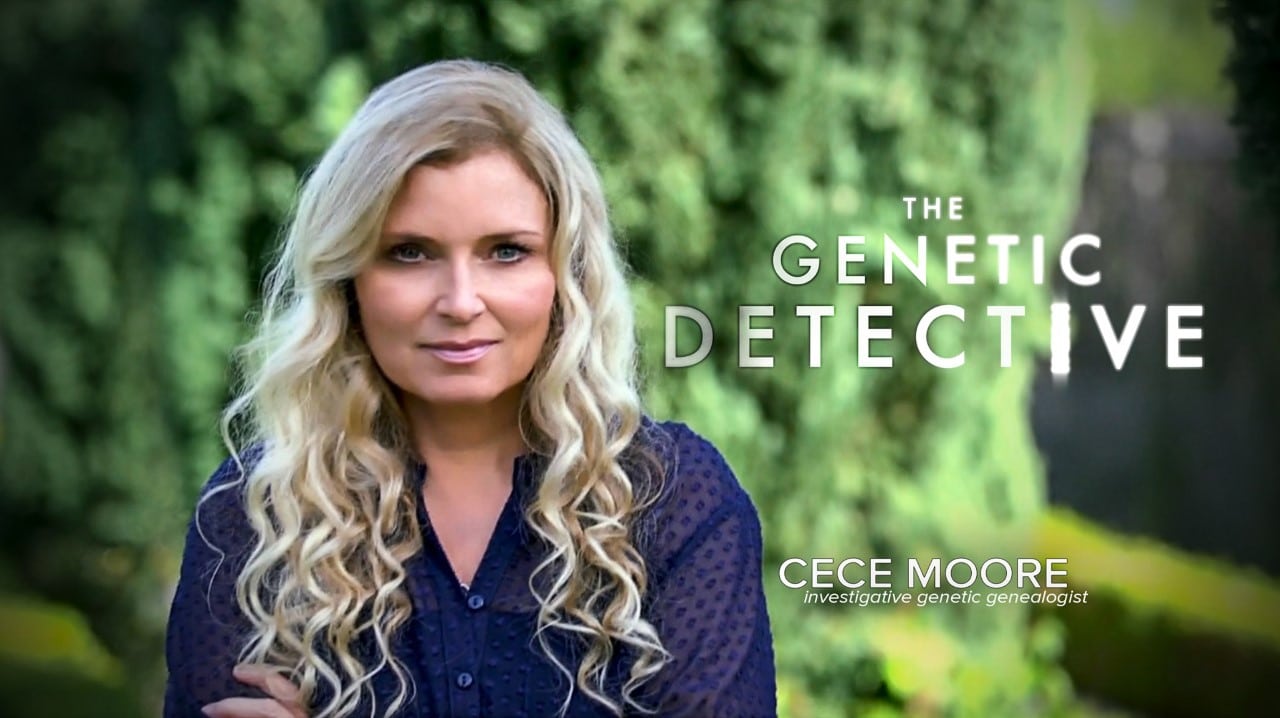
Cece Moore is the chief genetic genealogist at Parabon NanoLabs and the founder of the DNA detectives. (Submitted by Cece Moore)
Moore got interested in using DNA for genealogy purposes, but in recent years has helped law enforcement on criminal cases. She mostly identifies murderers and rapists but also assists with unidentified victims like John and Jane Doe. Since Moore started working with law enforcement, she has helped in more than 155 cases with successful identifications.
“I have long been promoting this idea that anybody who has a missing family member, whether it’s a child or an adult, should get their DNA in the consumer DNA testing databases, because there’s always the chance they’re out there somewhere,” she explains. “If it’s an old case and the missing person had children or even grandchildren, that person could take that DNA test and you’ll find each other again.”
Moore maintains there’s always a chance that that person is out there somewhere and they just don’t know their true identity. While Moore is reluctant to give false hope to families, she believes even if one family finds their loved one it is worth it.
Moore points to the Paul Fronzac case as proof of the possibilities DNA offers.
Related articles:
-
Missing Michael: Witness to his abduction
-
Podcast marks millionth milestone
-
Missing Michael: The Milwaukee barber’s creepy collection
-
The story of a Victoria boy who vanished without a trace
Fronczak was kidnapped as a newborn from his mother’s arms in a Chicago hospital in 1964.
“It’s a bit like finding a needle in a haystack, but it is possible. And that has been proven through the Paul Fronczak case. I said all along, we needed to make sure his biological relatives had their DNA in the databases. And sure enough, it took a few years, but … Paul Fronczak’s daughters did take a DNA test and they had no idea that their father was the real Paul Fronczak,” recalls Moore.
The use of the DNA databases as an aid in these kinds of cases is not without controversy. The battle over digital privacy and access to the personal data people generate by using consumer technology is ongoing.
If Michael is alive, he would be 35 now.
Victoria police want people to think about Michael as an adult male in his mid-30s.
They worked with RCMP forensic artist Cpl. Virginia Bernier to create a sketch of what Michael would look like if he is alive today.
Have you seen missing man Michael Dunahee? Today, on the 30th anniversary of his disappearance, we are releasing a new, age-enhanced forensic sketch of Michael. This video tells the story of the sketch & the ongoing search. #yyj https://t.co/86m6cfNgaK pic.twitter.com/gG8BvQ8DPn
— Victoria Police (@vicpdcanada) March 24, 2021
Bernier was honoured to take on the challenge.
“I relied very heavily on the photos of Caitlin because they looked a lot alike as small children. And then I consulted with Crystal a little bit more about hereditary hair loss, dental jaw issues, any distinguishing features that Michael may have had as he aged. They gave me great photos. Caitlin’s photos were phenomenal to work with. They definitely have a strong likeness.”
An earlier version of Bernier’s sketch of Michael was returned to her after Crystal viewed it and made a request,
“Crystal would rather not have him smiling in the picture and I get that, she may have thought, ‘I don’t want my son to be smiling because he’s not with me.'”
Related articles:
-
Missing Michael: ‘Hellcats’ friendships forged in tragedy
-
Missing Michael: The brown van tip
-
The Michael Dunahee investigation: The early days
-
Missing Victoria boy Michael Dunahee focus of new podcast
In the final image, Michael has a more neutral expression. Bernier imagines her sketch has now been seen around the world.
“Who knows, if one person out there might see it and say, ‘You know what? I know that guy,'” she explains.
“We all know an abduction of a child really is every parent’s worst nightmare. So, if I can utilize my skills and training to create an image of how Michael might look today, then I’ve done something good. I’m glad they put their trust in me and I was proud to present them with a final image that they were pleased with. If it helps to identify Michael and bring him home to his family, that would be incredible.”
If you have information about the disappearance of Michael Dunahee, please go to Michaeldunahee.ca and click on the report a tip button. You can also report a tip here.
‘Missing Michael’ is a 10-part podcast series for Rogers Frequency Network. New episodes will be published weekly on Tuesdays until the end of March.
You can listen to this series and other Island Crime episodes on all podcast platforms.
Rogers is the parent company of this station and the Frequency Podcast Network


